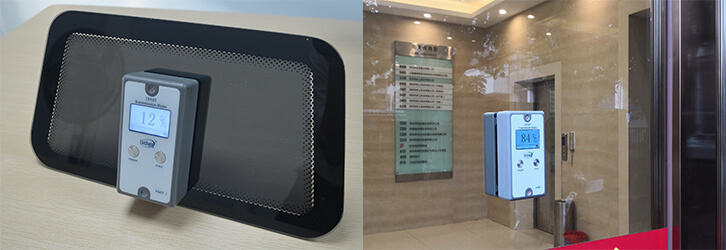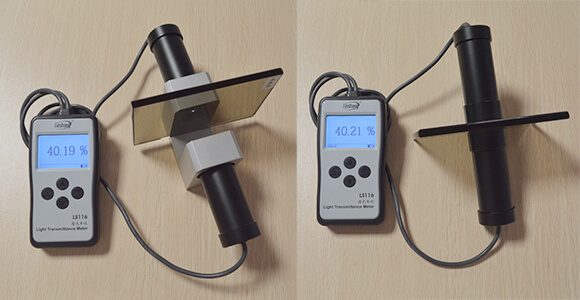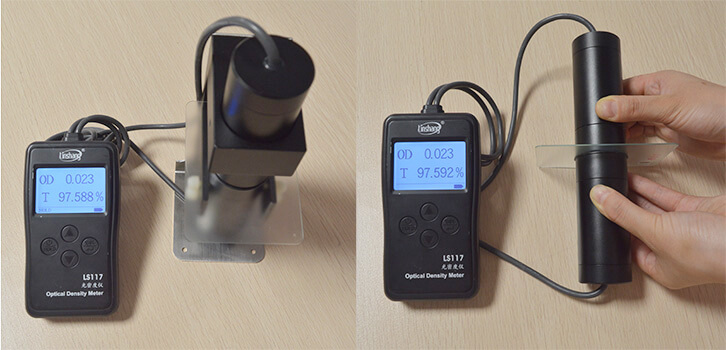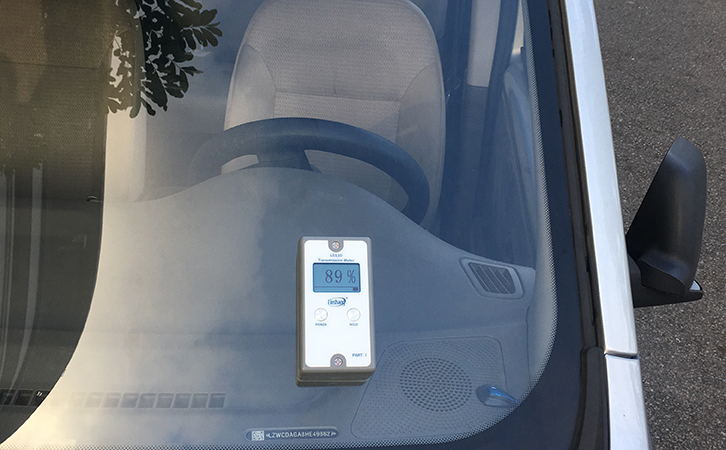Light Transmission Meter Selection and Light Transmittance Detection
I. Light transmittance testing requirements
Light transmittance is an important technical index for many optical products. Many materials have requirements for light transmittance, such as glass, solar film, acrylic, film, stick-film glass, PC plastic, opalescent translucent materials, matte materials such as zirconia, opalescent acrylic, etc. The level of light transmittance affects the product performance to a certain extent. For transparent and translucent materials, we recommend using different light light transmission meters to detect their light transmittance.
Some customers will ask "I want to test the light transmittance of transparent and matte materials. Why can't I just buy a light transmission meter and save some money?". The light path of the material is different. For the specific transmission principle, please see below:
II. Light transmission meter with regular or diffuse transmission?
1. Principle of regular transmission
Regular transmission is a transmission phenomenon of light propagating in the medium. That is, when the light deflects at an angle in a material with a smooth surface and a uniform internal texture, it is called regular transmission. It is also called straight transmission. Through the material with regular transmission characteristics, we can see the image behind it. Common regular transmission materials in life are mainly glass, common curtain wall glass, doors and windows glass have this characteristic.
2. Principle of diffuse transmission
Diffuse transmission refers to the indefinite refraction of light in materials with uneven surface structure or uneven internal texture. This phenomenon is called diffuse transmission. Unlike regular transmission, light deflects in multiple directions at different angles in materials with diffuse transmission characteristics. Diffuse transmission with the same brightness of transmitted light in each propagation direction is called uniform diffuse transmission. Through materials with diffuse transmission properties, we cannot see clear images. Film, medical X film, zirconia, opalescent, frosted glass and other materials that have diffuse transmission characteristics.
Different materials have different characteristics, we can’t generalize and only use one kind of light transmission meter to detect all materials. We should choose the corresponding instruments according to the characteristics of different materials. Linshang light transmission meter is the best choice for most customers who have a need for light transmittance testing. In the following, we will introduce the regular transmission light light transmission meter and the diffuse transmission light light transmission meter respectively.
3. Linshang light light transmission meter
● Adopt 380-760nm full-wavelength white light, in line with CIE photopic luminosity function
● Three-way visible light source measurement
● Adopt 380-760nm white light, in line with CIE photopic luminosity function
● Adopt parallel light path design and the maximum thickness of the measurable material can reach 100mm
● Adopt 380-760nm white light, in line with CIE photopic luminosity function
● Use diffuse transmission optical path
III. Light transmittance actual measurement
1. LS110 light light transmission meter
This light transmission meter is suitable for measuring the transmittance of transparent materials such as acrylic, film, glass, especially car front windshield. The instrument is a split design, with strong magnetic attraction between the main and auxiliary machines. The LS110 light transmission meter can accept the installed building curtain wall glass, the automotive stick-film glass. It can also detect the uninstalled glass.

2. LS116 light transmission meter
The LS116 high-precision light light transmission meter can be used for the transmittance test of glass products, solar films, film-coated glass, coating materials, organic material panels and other materials, with an accuracy of ± 1%. It is suitable for various occasions such as exhibition, production, quality inspection and inspection. This light transmission meter is equipped with a fixed seat and has two measurement methods; that is, it is suitable for testing such as on-site measurement of the car front windshield. It is also suitable for fixed-point light transmittance measurement of fixed stations in the factory.

3. LS117 light transmission meter
LS117 light transmission meter is an instrument that can simultaneously measure optical density and light transmittance. The light transmission meter use the diffuse transmission principle. It is suitable for optical density testing of aluminum-plated films, films, X-ray films, lens inks and other materials, as well as light transmittance testing of opalescent translucent materials and matte materials, such as zirconia, opalescent acrylic and so on.
Fixed base measurement: more suitable for testing small samples
Hand-held measurement: Take the probe down and test it, which is more suitable for irregular and large materials.

IV. Verification regulations and calibration specifications
1. Light transmission meter regulation transmission
The optical density detection of Linshang LS117 is in accordance with JJG920-2017 "Diffuse Transmission Visual Densitometers" and JJG178-2007 "Ultraviolet, Visible and Near-Infrared Spectrophotometers".
The specification of the diffuse transmission visual densitometer stipulates: "The diffuse projection source and the directional receiver can be used to measure the diffuse projection density. This arrangement is called the" diffuse incidence mode ". The diffuse receiver is called "diffuse emission mode." The two diffusion modes are shown in the figure below. The measurement mode can be described with a specified diffusion distribution and a specified directional distribution. Whether the distribution is a radiation distribution or a reception distribution depends specific patterns. "
The verification procedure for ultraviolet, visible and near-infrared spectrophotometers stipulates: "Because there is mutual reflection between the opal glass and the sample (see GB / T 11500-2008 / ISO 5-2 transmission density geometric conditions for details), the receiving probe must be pasted with black flannel before calibration. "
2. Parallel path light transmission meter calibration specification
The calibration standard of the light transmission meter is JJF1225-2009 "Calibration Specification for Transmittance Meter of Automobile ", which specifies that the light transmission meter must meet the requirements of the CIE photopic luminosity function standard. CIE photopic luminosity function refers to the human's visual system's different sensitivity to different wavelengths of light, that is, the four-wavelength function of the human eye's corresponding degree of light. The International Commission of Illumination (CIE) published the standard value of the bright visual function V (λ) on the basis of experimental data in 1971 and was approved by the International Metrology Commission in 1972.
- Linshang Insulated Glass Unit Measuring Tools
- Spectacle lens anti-blue light detection---blue-violet light transmittance meter
- Measurement of Optical Density
- Difference of LS116 Transmission & LS117 OD Meter
- Difference between LS116 and LS117 Light Transmittance Meter
- What’s the Difference Between Point Light and Parallel Light Transmittance Meter


